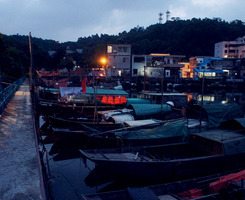雅思聽力課上,涉及到某一特定的場(chǎng)景時(shí),雅思中國(guó)網(wǎng)海外考試研究中心建議老師可以按照?qǐng)鼍暗某鲱}思路進(jìn)行拓展。比如旅游場(chǎng)景下,一般我們需要考慮到的是:
l 旅游前的準(zhǔn)備
u 衣食住行:
去什么景點(diǎn)( ),參加什么活動(dòng)( ),穿什么衣服( ),攜帶什么樣的設(shè)備( ),住宿情況的安排( ),乘坐什么樣的交通工具( ),時(shí)間安排( )等。
u 旅游景點(diǎn):
雅思考試中曾經(jīng)對(duì)于英國(guó)和澳大利亞的多個(gè)風(fēng)景名勝進(jìn)行過考察,如:Stonehenge(巨石陣),Great Barrier Reef(大堡礁),Sydney Opera House(悉尼歌劇院)等等。
u 衣著方面:
如果去爬山,要穿(lose clothes ),而如果去海灘,要穿(slippers or sandals)
u 設(shè)備方面:
如果去釣魚,要帶釣具( fishing gear )
如果要去燒烤(barbecue ), 要帶烤架(grill)
u 住宿情況:也各有不同,如果經(jīng)濟(jì)比較寬裕,可以住hotel(賓館),如果是學(xué)生,則一般都會(huì)比較便宜的youth hostel(青年旅社),或者選擇B&B(bed and breakfast)的形式借宿在當(dāng)?shù)厝说募依铩?/span>
u 活動(dòng)項(xiàng)目:
旅游中涉及到很多活動(dòng)項(xiàng)目,常見的有:hiking(徒步旅行)、mountain climbing(登山)、cycling(騎自行車)、hot air ballooning(乘坐熱氣球)、rafting(漂流)等。
此外,老師也可以結(jié)合雅思中國(guó)網(wǎng)海外考試研究中心提供的每一期的考題回顧,自己整理成填空或選擇題的形式在課堂進(jìn)行互動(dòng)。例如: 去熱帶旅游,要注射疫苗( ) 以防止黃熱病( );這些疾病通過蚊蟲傳播( ),要攜帶蚊帳( ), 還要去藥店( ),買防蟲水( ); 因?yàn)橥局幸卟簧俾罚砸┻m合不行的靴子( );旅游要花錢,可以帶旅游支票( )或者信用卡( )。 與此同時(shí),上課老師也可以補(bǔ)充相關(guān)的背景內(nèi)容,在擴(kuò)充文化背景內(nèi)容的同時(shí)對(duì)所涉及的場(chǎng)景加以鞏固,還能讓整個(gè)課堂內(nèi)容顯得十分飽滿。例如: The Sydney Opera House is an expressionist modern design, with a series of large precast concrete 'shells', each taken from a hemisphere of the same radius, forming the roofs of the structure. The Opera House covers 1.8 hectares (4.5 acres) of land. It is 183 metres (605 ft) long and about 120 metres (388 ft) wide at its widest point. It is supported on 588 concrete piers sunk up to 25 metres below sea level. Its power supply is equivalent for a town of 25,000 people. The power is distributed by 645 kilometres of electrical cable. The roofs of the House are covered with 1,056,006 glossy white and matte cream Swedish-made tiles, though from a distance the tiles look only white. Despite their self-cleaning nature, they are still subject to periodic maintenance and replacement. The Concert Hall is contained within the western group of shells, the Opera Theatre within the eastern group. The scale of the shells is chosen to reflect the internal height requirements, rising from the low entrance spaces, over the seating areas and up to the high stage towers. The minor venues (Drama Theatre, Playhouse, and The Studio) are located beneath the Concert Hall, as part of the western shell group. A much smaller group of shells set to one side of the Monumental Steps houses the Bennelong Restaurant. Although the roof structures of the Sydney Opera House are commonly referred to as shells (as they are in this article), they are in fact not shells in a strictly structural sense, but are instead precast concrete panels supported by precast concrete ribs. Apart from the tile of the shells, and the glass curtain walls of the foyer spaces, the building's exterior is largely clad with aggregate panels composed of pink granite quarried in Tarana. Significant interior surface treatments also include off-form concrete, australian white birch plywood supplied from Wauchope in northern New South Wales, and brush box glulam. Performance venues and facilities The Concert Hall and Grand Organ The Sydney Opera House contains five main performance spaces, other areas used for performances, a recording studio, five restaurants, and four souvenir shops. The five venues making up the main performance facilities: Other spaces used for performances and other events include: Besides theatrical productions and concerts, venues at the Sydney Opera House are also used for activities such as conferences, ceremonies, and social functions.
文章來源于網(wǎng)絡(luò),如有侵權(quán)請(qǐng)聯(lián)系我們,將會(huì)在第一時(shí)間處理
更多資訊可以關(guān)注微信公眾號(hào):IELTSIM。
[AD] 點(diǎn)擊此處了解【雅思合集】【學(xué)習(xí)計(jì)劃定制】【終生VIP服務(wù)】






